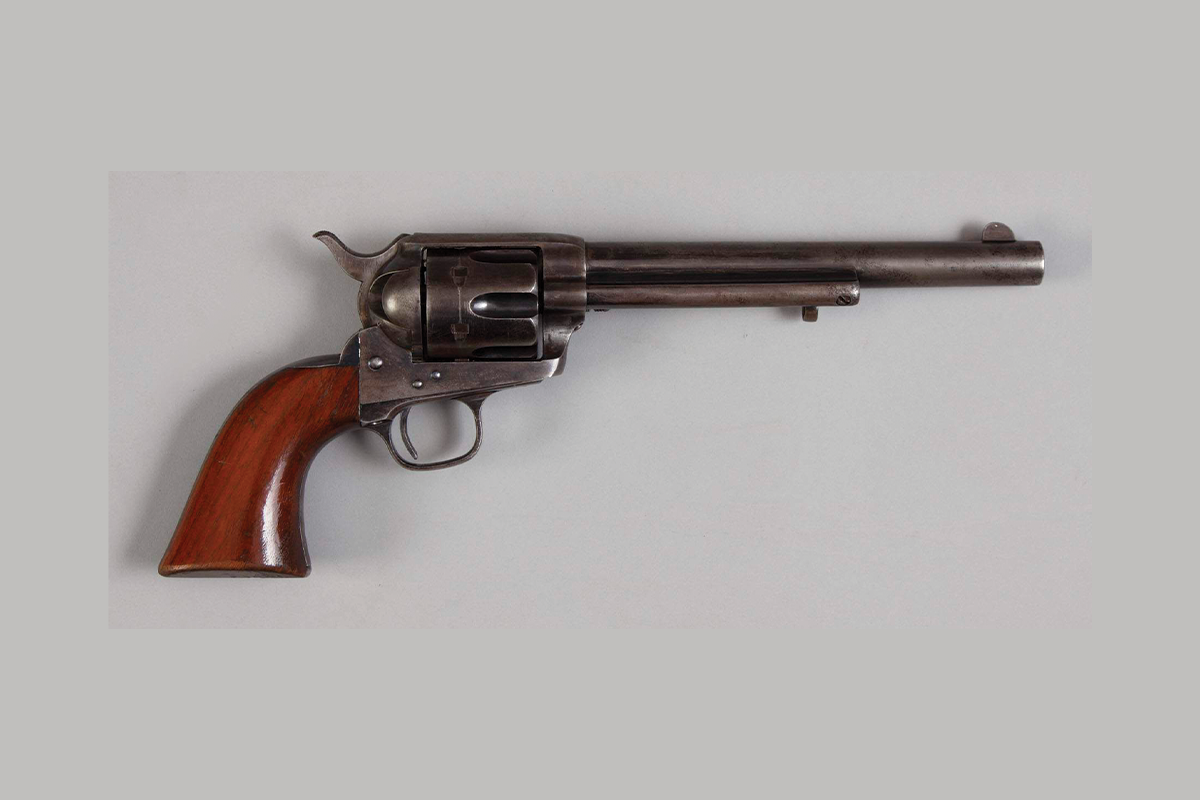
Although many other makes used, the Colt single-action six-shooter was the weapon of choice for most gunfighters. In his hands it was both a tool of justice and destruction—“Judge Colt and His Jury of Six.” The favorite model was the 1873 Peacemaker, or as it was officially called, Colt Single Action Army. You could purchase one through a mail-order catalog for just seventeen dollars. Fully loaded, it weighted just three pounds, had a 7 1/2-inch barrel, fired a .45 caliber bullet, was well-balanced, durable and had “more curves ‘en a dance hall girl.” It packed a wallop—two hundred fifty-five grain bullets were propelled by 38 to 40 grains of black powder. Gunfighters usually preferred the shorter 4 3/4-inch barrel. Lawmen sometimes sharpened the knife-blade front sight to “buffalo,” or “pistol whip” a lawbreaker. That was done by gripping the stock and frame and striking an adversary with the gun barrel.
In 1878, the .44 caliber Colt came on the market. It was popular among westerners because most also carried the Winchester Model 1873 .44-40 in their scabbard. That way one needed to pack only one kind of ammunition for both pistol and rifle.
The revolver was designed for close-quarter fighting. An experienced gunman was considered proficient if he could hit what he was aiming at in a distance of fifteen yards. Since the rifling in the barrel twisted to the left, the bullet would also drift some 30 inches in 300 yards no matter how good the shooter was. Its maximum effective range was 75 yards. At fifty yards it was considered good shooting to group the shots in a six-inch circle. But it could be effective at long range. The Army tested the Peacemaker and found that by allowing for trajectory, the point of aim at 150 yards should be 4 feet above the target and at 200 yards one had to line the sights up 8 feet above the target.





